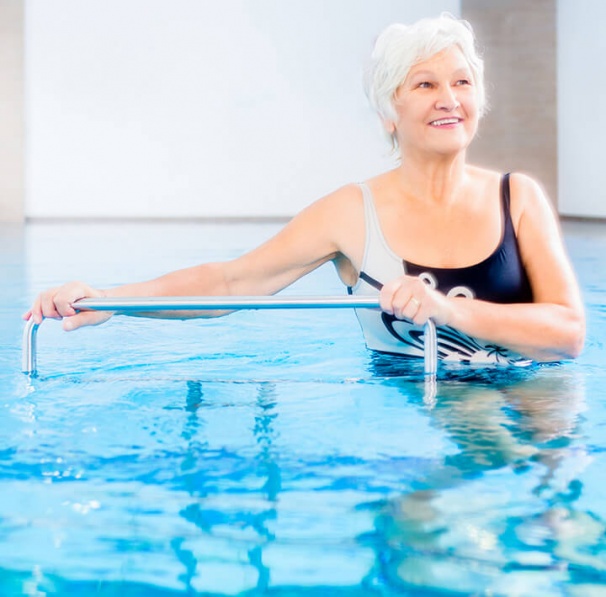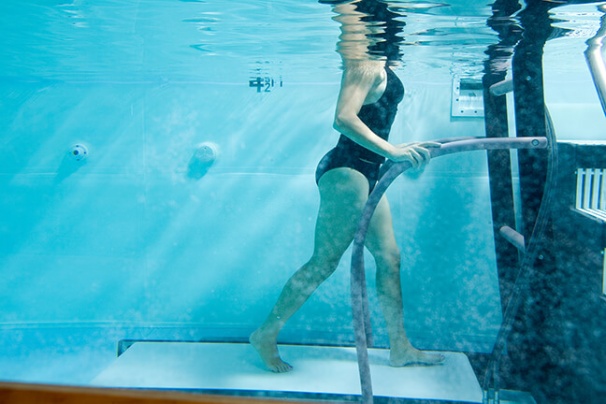The soothing properties of aquatic therapy helps heal patients while improving patient recovery times and fitness levels. Compared to other forms of physical therapy, aquatic therapy results in higher rehabilitation rates, is often less painful during the recovery process and significantly decreases joint and fracture pain due to the buoyant force of the water.
Another remarkable feature of aquatic therapy is that it can often begin before other weight bearing activities and therapy. For athletes looking to get back quickly into competition or for patients who want to recover from surgery as quickly as possible, aquatic therapy is the therapy of choice.
Our aquatic therapy programs:
- Improve flexibility
- Improve balance and coordination
- Build muscle strength and endurance
- Enhance aerobic capacity
- Assist with gait and locomotion
- Reduce stress and promote relaxation
Common conditions treated by aquatic therapy:
- Arthritis
- Arthroscopic surgery recovery
- Balance disorders
- Bursitis
- Chronic pain
- Idiopathic joint pain
- Joint reconstruction
- Joint replacement
- Lower back pain
- Osteoarthritis
- Orthopedic injuries
- Rheumatoid arthritis
- Spinal cord injury
- Sprains and strains
- Stroke
- Tendonitis
Pool features:
Underwater Treadmill – is commonly used to help athletes recover from injuries or to help patients regain full-body motion after surgery.
The underwater treadmill is also used to:
- Promote early range of motion
- Initiate gait training in a low-impact environment
- Duplicate land-based movement biomechanics
- Improve cardiovascular stamina
- Impact muscle strengthening
- Increase ability to perform a wide range of plyometrics
- Decrease joint stiffness
- Offer the ability to perform exercises in multiple planes of motion
Resistance Jets – with adjustable speeds allow for gradual increases in workout resistance during therapy.
Underwater Cameras – allow therapists to monitor a patient’s form and progress from session to session and to make real-time adjustment during therapy.


